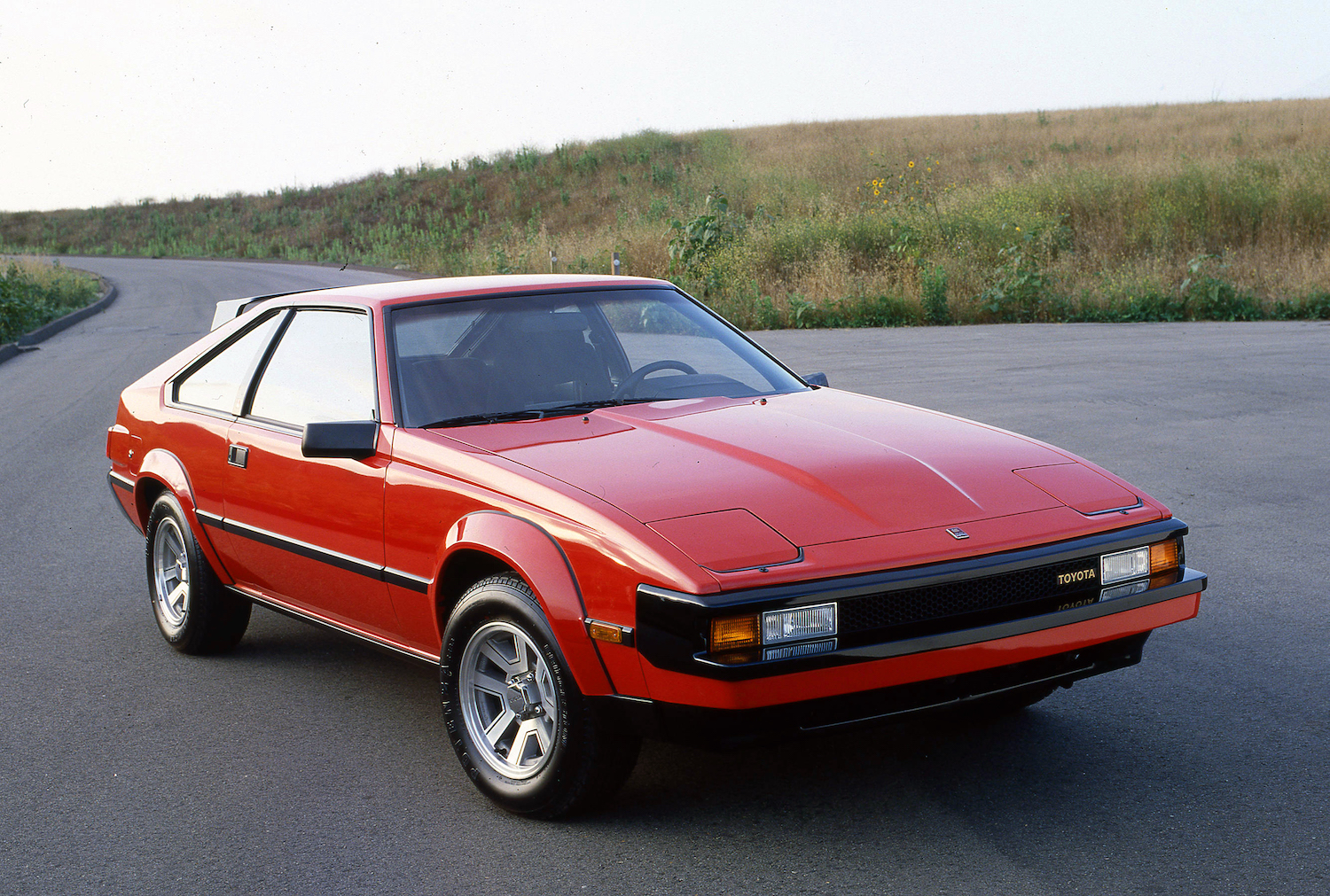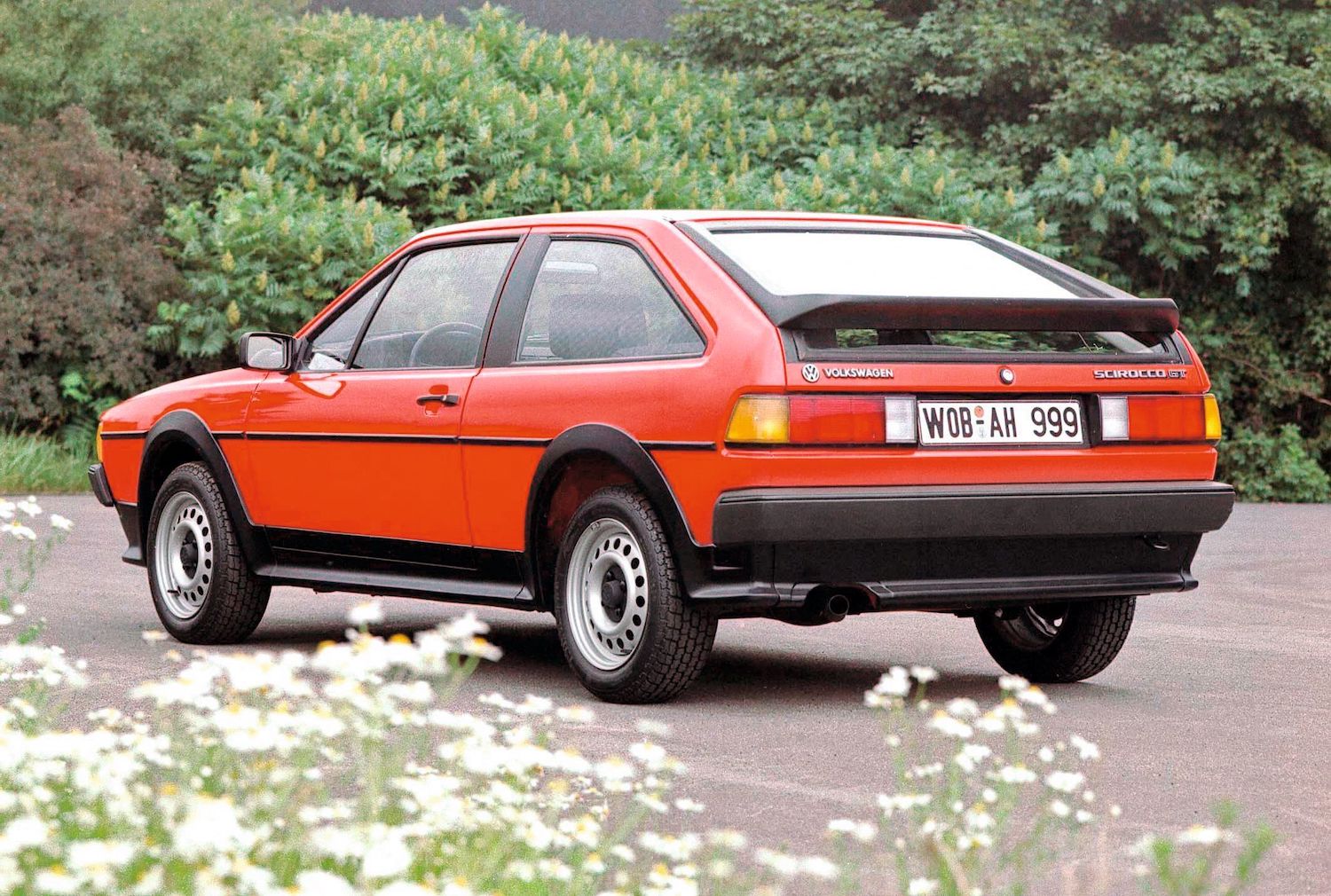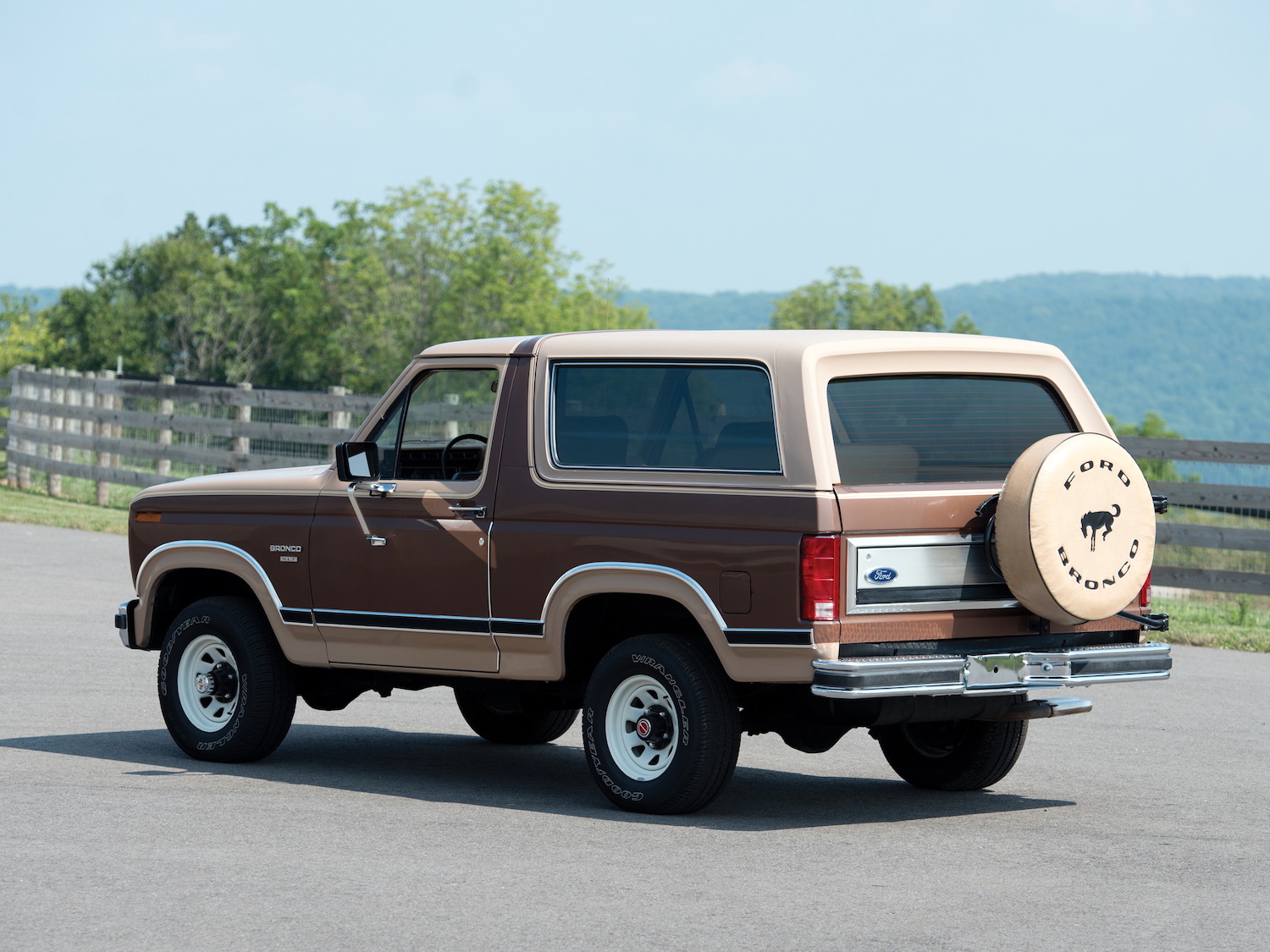6 sweet ’80s classics that got hot in 2019
If you’re looking for pop-up headlights, we’ve got ‘em! These hot cars from the 1980s all had a big 2019; in many cases, their upside in the overall collector market dramatically reversed from January to December, as measured by the the Hagerty Vehicle Rating.
[Editor’s Note: The HVR is a 0–100 scale that says a lot about what’s trending hot in the market—and what’s suffering a cold snap. A vehicle’s HVR isn’t an indicator of its future collectibility, but it does synthesize insurance and quoting activity into a more intuitive metric. The HVR also takes into account auction activity and private sales results, awarding a rating of 50 to a vehicle that is keeping perfect pace with the current market. Ratings above 50 reflect above-average appreciation and ratings below 50 are lagging behind the market.]
All vehicles listed ended the year at a higher rating than they started, some moving from the lowly Bottom 25 of all models we track in January to the scorching Top 25 in December. People who were kids when these cars were new are now aging into their car collecting years, and with nostalgia for the 1980s at an all-time high, it might be the right time to hop on the hair-metal bandwagon.
1982–86 Toyota Supra Mk II

HVR: 87 (+65 points)
The Mk II Supra had the biggest improvement during 2019 of all the cars on this list, with an increase of 65 points (22 in January to 87 in December). Its HVR score was even at 93 for three straight months from August to October, making it one of our top performing cars in any decade. If the Mk II Supra is so hot now, why did it start off the year so low?
For one, the Mk II is not the obvious favorite of the Supra generations and often goes overlooked. It was the last Supra to share its platform with the Celica and was still officially badged as the Celica Supra. Even though the 2.8-liter inline-six was a good engine, the Mk II didn’t get any of the legendary JZ engines of the later Supras. It did have a few things going for it, though. The four-wheel independent suspension was designed and tuned by Lotus. In full ‘80s style, pop-up headlights were standard and two-tone color schemes were available on performance versions. Speaking of performance, in the last two years of production, the 2.8-liter engine made 178 hp, which was good enough for an 8.4-second 0–60 time. Not incredibly fast by today’s standards, but it was a full two seconds quicker than a DeLorean, for what that’s worth.
It’s not the fastest Supra, nor the best looking, but it is one of the most affordable. With all the attention the Mk IV Supra has gotten in the last few years, with many sales over $100,000, the earlier Supras are, to many buyers, looking better and better. In the last year, our average #2 value for a Mk IV Supra is up 6 percent to $50,553, while the Mk II is up 5.1 percent to $15,600, which could make it a solid long-term purchase. The fact that the Mk II Supra is still affordable is probably why it is so attractive to the younger generations. Millennials and Gen-X account for 71 percent of all quotes (38 percent and 33 percent respectively), which is a strong sign of future collectability.
1978–95 Porsche 928

HVR: 60 (+32 points)
Imagine that Porsche stopped its rear-engine shenanigans in the late 1970s and moved all engines to the front, just like everyone else. Killing off the flagship 911 and replacing it with the 928 was, indeed, Porsche’s original plan. Executives at the time thought the front-engine 928 would have wider mass-market appeal compared to the small, and often unruly 911, which they thought was reaching the limits of its potential. After all, 911 sales were starting to fall and there was a real fear that the United States, Porsche’s largest market, would ban rear-engined cars over safety concerns surrounding the Chevy Corvair and Ralph Nader’s book Unsafe at Any Speed. Considerations around emissions regulations were part of the picture, too. Think about a world with Porsche but without the 911. Fortunately, Porsche decided to keep the 911 and rather supplement its lineup with the 928, billing it as a more comfortable GT car.
The 928 was the first car designed by Porsche from the ground up. (The 356 evolved from the Beetle, the 911 from the 356, the 914 was a collaboration with VW, and the 924 was borrowed from a scrapped VW/Audi project). Since the process started from scratch, Porsche also designed its first production V-8 for the 928. Even with all the added effort, the 928 didn’t sell like crazy out of the gate. Unsurprisingly, the water-cooled front-engine alienated many Porsche purists, but the car’s comfort and performance were enough to attract new customers. It weighed more than the 911 but had more power (350 hp in the GTS) and better weight distribution, resulting in similar track performance.
According to our HVR data, the 928 increased 32 points from January to December, signifying that this car is now pacing ahead of the overall market. It’s easy to see why. The design has aged very well, exhibiting perfect level of 1980s quirk and 1990s simplicity. The timeless design probably explains why the 928 was in production for so long without any major styling changes. Plus, the 928 has Miura-like pop-up headlights (the kind the Bugeye Sprite wishes it had). Still, given that more than 80 percent of these Porsches were produced with an automatic transmission and the current median #2-condition (Excellent) value is $40,500, finding the right 928 could take some time.
1981–88 Volkswagen Scirocco Mk II

HVR: 87 (+31 points since April)
After a few insanely high sales for the Integra Type R and other low-mileage Hondas, the collector market’s attitudes are warming when it comes to front-wheel drive. The Mk II Scirocco is part of that phenomenon. Although it was first produced with a 74-hp inline-four, the most desirable engine is the 123-hp 1.8-liter 16-valve four-cylinder from the final two years of production. With an added body kit and larger rear spoiler from factory, the 16v almost looks like an Audi Coupe GT. If you squint your eyes even more, it’s a front-wheel-drive Audi Sport Quattro. Unfortunately, the U.S. never got the beautiful Mk III Scirocco, because VW feared it would hurt Golf sales (probably true).
We started tracking the second-generation Scirocco in April 2019, and it kicked off in the middle of the pack at 56. Since then, the Scirocco has moved up 31 points to a score of 87 in December. Why the big jump? The main reason is price. Average #2-condition (Excellent) value for the 16v in the Hagerty Price Guide increased 100 percent this year, to $17,400. Gen X grew up with these cars and still love them, and 49 percent of Scirocco quotes come from that demographic.
1982–92 Chevrolet Camaro Z/28

HVR: 75 (+27 points)
The third-generation Z/28 heavily modernized the Camaro. This generation was 500 pounds lighter than the previous generation and were the first Camaros with factory fuel injection, hatchback bodies, and an extra gear for their automatic and manual transmissions (four-speed and five-speed, respectively).
All these advancements lead to critical acclaim, and in its first year of production, the Z/28 won Motor Trend car of the year. The 1982 Z/28 came standard with the 5.0-liter LG4 four-bbl V-8 rated at 145 hp, and an optional fuel-injected version had 165 hp. These early third-gen Z/28s could go 0–60 in nine seconds, but in the last two years of production there was a 245-hp 350-cubic-inch V-8 that got this number down to just over six seconds. There was an Indy 500 Pace Car edition in 1982 and the legendary IROC-Z started production in 1985.
Appreciation for the third-gen Z/28 is growing. Our insurance quotes are split evenly across Baby Boomers, Gen X, and Millennials, an indicator that there is cross-generational interest. Its HVR score increased 27 points this year and, in that same amount of time, its average #2-condition (Excellent) value increased 2.4 percent to $14,900. Don’t be surprised if the values continue to climb.
1984–89 Toyota MR2

HVR: 85 (+22 points)
If you love the 1980s and have a soft spot for Japanese cars, a great option is the first-generation Toyota MR2. T-tops, pop-up headlights, mid-engine layout with a supercharger—it checks all the right boxes. The MR2 also has a great history. It was Japan’s first mid-engined production car and its designers had but one essential goal—make it fun to drive. To accomplish this, Toyota focused all its energy on the car’s handling. As in the contemporary Supra, the fully independent suspension was designed with the help of Lotus, and four-wheel disc brakes came standard.
The only issue was the MR2? It was underpowered. The inline-four had only 112 hp at launch, which could nudge the 2300-pound car to 60 in a little over eight seconds. This was still faster than other small mid-engined cars at the time (Fiero and X1/9). In 1986, Toyota added a supercharger to boost the little 1.6-liter to 145 hp, which shaved down the 0-60 time to 6.5 seconds. Toyota, its practical wisdom, devised a way to only run the supercharger when needed, which increased fuel economy. It’s common to get above 30 mpg in normal conditions in these MR2s, and you can even average 22 mpg when you drive it like the designers and engineers intended.
Toyota even considered entering the MR2 into Group B rally racing. It developed a 1650-lb, 750-hp version called the “222D” for Group S (Group B’s planned replacement) but scrapped the project when Group B was canceled. If Toyota got the chance to race the MR2, imagine what that would have done to the car’s collectability, considering what other Group B homologations, and the cars they are based on, sell for these days.
The first-generation MR2 has already become collectible and shows no signs of slowing down, which is why we included it in our 2019 Bull Market List. Its HVR score increased 22 points over the last year, staying above 80 for the past four months. Since the start of 2019, the average #2-condition (Excellent) value increased 28 percent to $15,550. The MR2’s still-affordable price could explain why a staggering 47 percent of quotes came from Millennials in 2019.
1980–86 Ford Bronco

HVR: 88 (+21 points)
First-generation Broncos have skyrocketed in value. The median #2 value for a 1966–77 Bronco has increased 40 percent since January 2018 to a staggering $50,100 in our most recent edition of the Hagerty Price Guide. Many readers are probably kicking themselves for not buying one 10 years ago, when you could buy one for $10,000. As the original Bronco inflates beyond the scope of many budgets, some of its successors benefit from a substitution effect—which is why we named the third-generation Ford Bronco to our 2019 Bull Market List.
Built from 1980 to 1986, the third-gen Bronco doesn’t share a lot with the original. For one, it’s much larger, with a 12-inch longer wheelbase and a 1500-pound heavier curb weight. But, the essence of the Bronco is there. It’s still a very capable three-door truck with a removable hardtop, though it leaves the front seat covered. This is the first Bronco generation to have a fully-independent front suspension and the first to offer the special “Eddie Bauer Edition” that was available on every Bronco since.
The third-gen Bronco has been growing in popularity in 2019. It started the year with an HVR score of 67 and rose 21 points to end with a score of 88 in December. The Bronco has been hovering around 85 for the past 10 months, showing no signs of slowing down. Since the start of 2019, the average #2 value increased 2 percent to $16,850. As an inexpensive and practical classic, the third-gen Bronco gets the most interest from the younger generations; Gen X and Millennials account for a combined 68 percent of quotes.
Honorable mention: 1977–88 Porsche 924
20181101171307)
HVR: 47 (+22 points)
The Porsche 924 is ending the year with an HVR score of 47 (up 25 from January when it was 22), which is still three points shy of the 50-point market average. No, it’s not quite hot yet, but it’s definitely a car to keep on your radar. Over 2019, the average #2 value in increased 9 percent to $19,000. The 924 was the first Porsche to be offered with an automatic transmission, so manuals fetch a premium.
The Porsche 924 was intended as Porsche’s replacement for the 914, as a new entry-level car. The 924 was originally planned as a VW/Porsche collaboration, but the oil crisis and other regulations caused VW to drop out and focus on the more profitable Scirocco. When VW ditched the 924 project, Porsche stuck with it, but the result was a delay in production. The 1976 912E was sold for one year to fill the entry-level gap left by the 914.
To many purists, the 924 is not a “true Porsche” because it uses a VW engine and was built on a VW production line. But this “True Porsche” narrative is losing its potency, like we’ve seen with the 914. Nevertheless, there are some inherent obstacles preventing the 924 from reaching the level of 914 values. The 924 originally had rear drum brakes, a step back from the 914’s four-wheel discs (there was a full disc brake option starting in 1980). Also, the 924 was originally criticized for its mediocre performance; the 2.0-liter engine only made 110 hp. Despite that weakness, the 924 demonstrated great handling and reliability. The 143-hp Turbo models are a great buy if you can find one (only 5895 were shipped to the U.S. between 1979 and 1983). In 1985, the 924 received the 944’s more powerful 148-hp 2.5-liter inline-four to make it a true sports car worthy of the Porsche crest.

